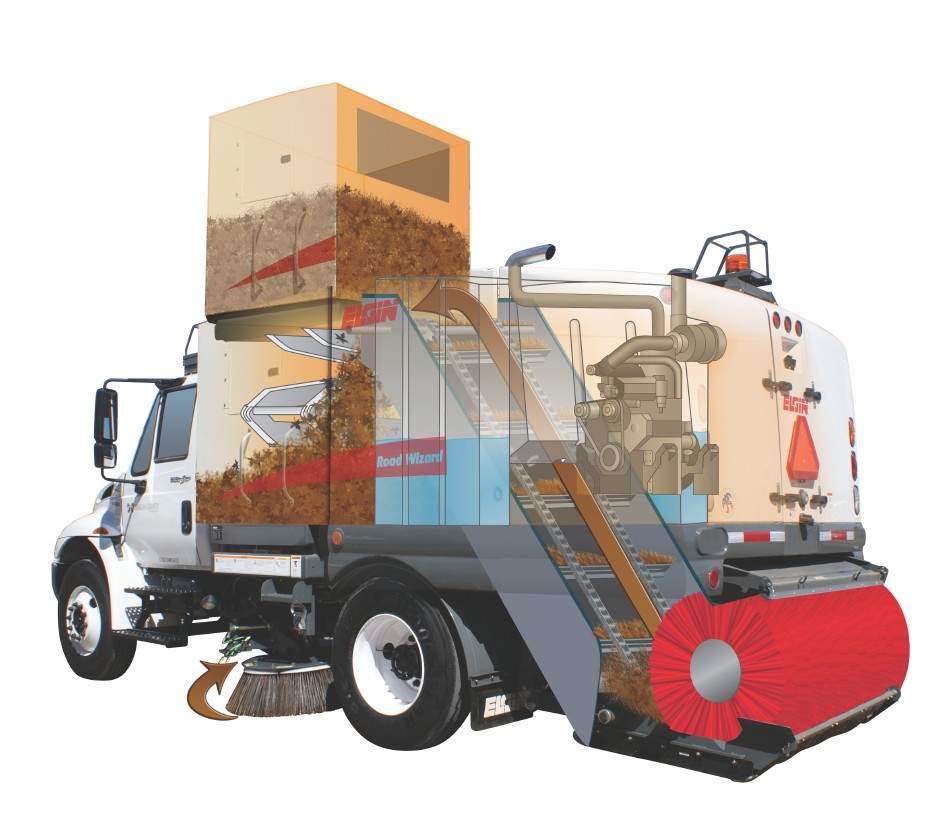Mechanised street sweepers explained

[fototag id=”Sweeper”]
Mechanical street sweepers today are usually large cab-over trucks equipped with a specialised cleaning module. These modules tidy up our roads using a series of rollers, brooms, sprays, filters and vacuums, combining these tools to quickly gather physical litter and process particulate dirt.
The two main types of sweeper are characterised as wet and dry units, the former installed with a large water tank and sprayers to help loosen caked-in grime, and the latter relying solely on a set of rollers and brushes. Key to both variants, however, is a series of vacuumised chambers that surround the vehicles’ litter collection units. These vacuums – commonly positioned around a sweeper’s rear roller brush and side-mounted brooms – draw both rubbish and fine particulate matter into a refuse hold and filtering system, supporting the physical gatherers. This action can be likened to that of an everyday household vacuum cleaner.
Once the rubbish is within the refuse hold, it is often exposed to a shaking unit, which separates further debris particles. These are sent, along with directly sucked-up dirt, into a filtering system. At this stage, a series of fans, filters and hoppers extracts the dust from the internal dirty air, traps and stores it for later disposal, and then expels the processed clean air back out into the environment.





